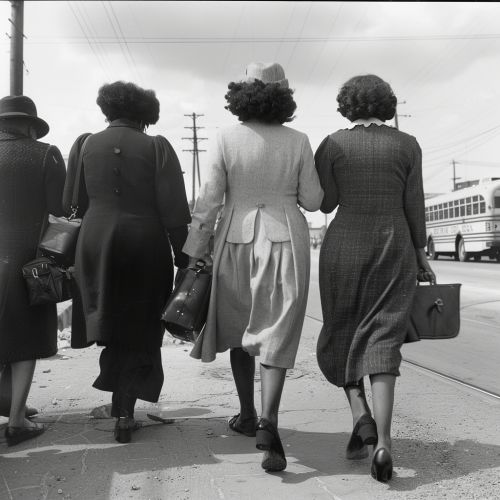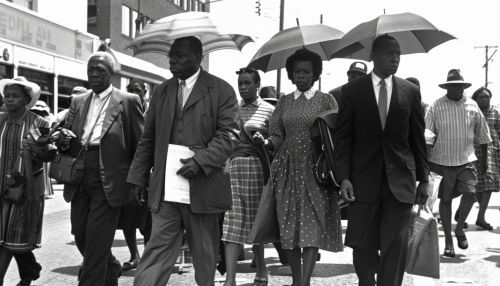Montgomery Bus Boycott
Background and Context
The Montgomery Bus Boycott was a seminal event in the Civil Rights Movement in the United States, marking a pivotal moment in the struggle against racial segregation and discrimination. The boycott began on December 5, 1955, and lasted until December 20, 1956, resulting in a Supreme Court ruling that declared segregation on public buses unconstitutional. This event was not only a significant victory for African Americans in Montgomery, Alabama, but also served as a catalyst for further civil rights activism across the nation.
Prelude to the Boycott
The roots of the Montgomery Bus Boycott can be traced back to the pervasive racial segregation in the Southern United States, particularly in public transportation. The Jim Crow laws enforced racial segregation in all public facilities, including buses, where African Americans were required to sit at the back and give up their seats to white passengers if the bus became crowded.
The immediate catalyst for the boycott was the arrest of Rosa Parks, an African American seamstress and civil rights activist, on December 1, 1955. Parks refused to give up her seat to a white passenger on a Montgomery bus, leading to her arrest and subsequent conviction for violating segregation laws. Her act of defiance was not an isolated incident but rather a planned action in coordination with the NAACP.
Organization and Leadership
The Montgomery Bus Boycott was organized by the Montgomery Improvement Association (MIA), which was formed shortly after Parks' arrest. The MIA was led by a young and relatively unknown pastor, Martin Luther King Jr., who would later become one of the most prominent leaders of the Civil Rights Movement. The MIA coordinated the boycott, which involved the African American community refusing to use the city buses and instead organizing alternative means of transportation, such as carpooling and walking.


The Boycott in Action
The boycott required meticulous planning and coordination. The MIA established a complex carpool system, with over 300 cars participating to transport African American workers to their jobs. Churches and community centers served as hubs for organizing and disseminating information. The boycott also received support from various civil rights organizations and sympathetic individuals across the country.
The economic impact on the Montgomery City Lines was significant, as African Americans constituted the majority of the bus ridership. The financial strain on the bus company, coupled with the growing national attention, put pressure on the city to address the demands of the boycotters.
Legal and Political Challenges
Throughout the boycott, participants faced numerous challenges, including harassment, arrests, and violence. The homes of Martin Luther King Jr. and other leaders were bombed, and many boycotters were arrested under various pretexts. Despite these challenges, the boycott maintained its momentum, largely due to the resilience and solidarity of the African American community in Montgomery.
The legal battle culminated in the case of Browder v. Gayle, which challenged the constitutionality of bus segregation. On June 5, 1956, the U.S. District Court for the Middle District of Alabama ruled that bus segregation was unconstitutional, a decision that was upheld by the U.S. Supreme Court on November 13, 1956. The ruling took effect on December 20, 1956, officially ending the boycott.
Impact and Legacy
The Montgomery Bus Boycott had far-reaching implications for the Civil Rights Movement and American society. It demonstrated the power of nonviolent protest and mass mobilization, setting a precedent for future civil rights actions. The boycott also propelled Martin Luther King Jr. into the national spotlight, establishing him as a leading figure in the fight for racial equality.
The success of the boycott inspired other similar actions, such as the Greensboro sit-ins and the Freedom Rides, further galvanizing the movement for civil rights. It also led to the formation of the Southern Christian Leadership Conference (SCLC), an organization dedicated to coordinating and supporting nonviolent protests against racial injustice.
